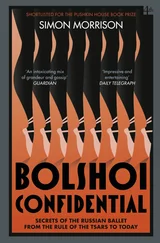Each scientist, coming to the job, was required to pass his “red certificate” (assistants and engineers giving their passes were receiving only notebooks) through a window at the First Department, and in exchange for that he received a briefcase or a suitcase with notebooks for records and accounts. Instructions about working with secret documents were included. All the lines were numbered in every notebook, and it was sewed with strong thread, the end of which was affixed to the last page with a stamped wax seal.
The registration of each notebook in the briefcase was recorded in an “inventory journal”, which contained a specialized chart that kept track of the inventory number of the notebook, the number of pages, the date of the start of the notebook, the date of the verification and destruction of the notebook after it was fully used up, and whether or not its text had been typed up.
If at any time the notebook was traveling to a different department, or even to your boss, it was recorded in the appropriate column in the inventory journal.
It was extraordinarily difficult to persuade a scientist to give up his working notebook to storage, after filling only half of it out, since often the notebook contained results that would be needed several years later. But, if the space in the notebook was already used up, then it was already pointless to try to discuss the matter. This complicated everything and created difficulties at work, as each scientist, before writing up reports or scientific articles, had strongly abbreviated all the details and parts of the research process, often giving just the final results. You can imagine how terrible each scientist felt when operatives from the First Department were checking the content of his briefcase.
In this way, the work system in GOSNIIOKhT created great hardship, even for authors who were using their own reports and methods. No more than four copies of these materials were then typed up and approved by the Deputy Director of Science. Then they were stored in the “Special Library”.
The author could only take out a copy of “his” report for a strictly limited time period, and you had to apply in writing for special permission to become familiar with the work of others. To get this special permission, you first had to go talk to the head of your department. Then the head of the First Department had to sign off on it, after he verified that the suitability of the applicant corresponded appropriately to the theme of the report (there was a special list for checking this compatibility). Then the approvals of the Deputy Director and the Director of the Institute were routinely required.
Ordinarily, it was practically impossible for a scientist to know the status of any problem, since he was not granted access to the card catalog of materials stored in the Special Library. Access was granted to only a very few people at the institute. Later on, as head of the Department of Foreign Technical Counterintelligence, I was given almost unlimited access. But in all fairness, I must say that I hardly ever used this privilege to familiarize myself with materials far removed from my sphere of professional interests. I think my reticence was based on common sense, since many of us knew that officers in the Special Library routinely kept track of everything that happened within their domain, for the Deputy Director. To bring yourself under the suspicion of the KGB was easier than trying to justify yourself later on.
During working hours, your notebook had to be placed only on the writing desk. Other notebooks, the inventory journal, and your instructions for storage procedures had to be placed in a private executive safe in the workroom. During lunch time, all notebooks were locked in this safe, and the head of the department kept a spare key.
In the evening, at the end of the working day, scientists had to put their notebooks back into the briefcase, which was then sealed in a special way with a personal seal with the inscription of Post Office Box 702 engraved on it. Later that was changed to the name of the institute – GOSNIIOKhT, with a five pointed star. Many years before this it was known as NII-42 (Scientific Research Institute 42), but some people believe that the name was changed to GOSNIIOKhT to mislead Western intelligence agents.
Though it is difficult to describe, this system created such a huge psychological burden on every person with a briefcase for secret material, even though they were compensated by a 15% pay increase.
Occasionally a scientist went home without returning his notebook. The head of the department or his deputy was responsible for compliance with these procedures, from the time he came to work until the last employee on his shift went home. When the duty officer from the First Department anxiously informed this boss that one of his employes went home without turning in the notebook, an alert was declared.
The boss tore the seal off the door and unlocked the room with his spare key. Then he entered the room and unlocked the safe of the negligent worker. All the contents of the safe were extracted and given to the First Department, on receipt. As a rule, the worker remembered about his blunder only when he got home, and suffered through the entire night without any sleep.
The next working day, a commission was established specifically to take up this matter, investigate the “case”, and write up a report with the facts (of the worker’s guilt).
The minimum punishment for this “crime” was an official reprimand by the institute and withdrawal of the worker’s quarterly bonus, which sometimes made up as much as one quarter of his paycheck. Additionally, it was not so rare for all the personnel of the laboratory or department to be punished by cutting their bonuses for such a violation. So, the guilty person was responsible for losing money for everyone else. I think every scientist at GOSNIIOKhT experienced several anxiety attacks, waking up at night in a cold sweat with the sinking feeling that he forgot to turn in his ill-fated notebook. Losing your official GOSNIIOKhT seal brought on the same kind of punishment. Not only would it cost you financially, but you would suffer from nervous strain for no less than an entire month. At the workers’ meeting, the department chairman tried to bear down on the guilty worker in every way, and this continued up until someone else was found guilty of the same crime.
There was another strict system for controlling note taking. Writing on anything like a scrap of paper was strictly prohibited. The Department of the Security Regimemade routine periodic checks of the rooms of the scientists. If the officers of this department found any paper with notes, a strict punishment was handed out and the guilty scientist could lose a considerable part of his salary. It was sickening to watch some of these officers, who were recruited from the ranks of metal workers, lathe operators and other representatives of the working class, routing through the trash can in the workroom. Writing down any chemical formula, even having something to do with pesticides or water, on a scrap of paper, was considered an especially serious crime.
All waste paper and rubbish from the workroom were burned in a special incinerator, located within the institute territory, which was also used as a crematorium for the corpses of test animals which had been used in experiments with chemical agents. I’m sure they set up the system this way because all people were considered potential traitors by the KGB.
No one had the right to use either the formula of a chemical agent or of its precursors in the text of a report, and you also weren’t allowed to use conventional chemical notation. There were several codes for each compound. One code was used for recording the “internal number” in the notebook, a second code was used for writing in scientific reports, and the third was used for recording in letters to other secret institutes or organizations. For example, Substance 33 – the code for the Soviet analogue of the well-known nerve gas VX, had to be written up in GOSNIIOKhT notebooks as M-01 (it also was given a trivial name such as “complex ether”), but in letters or reports it was necessary to write “Substance R-33.”
Читать дальше












